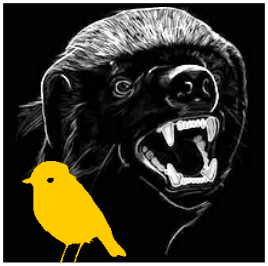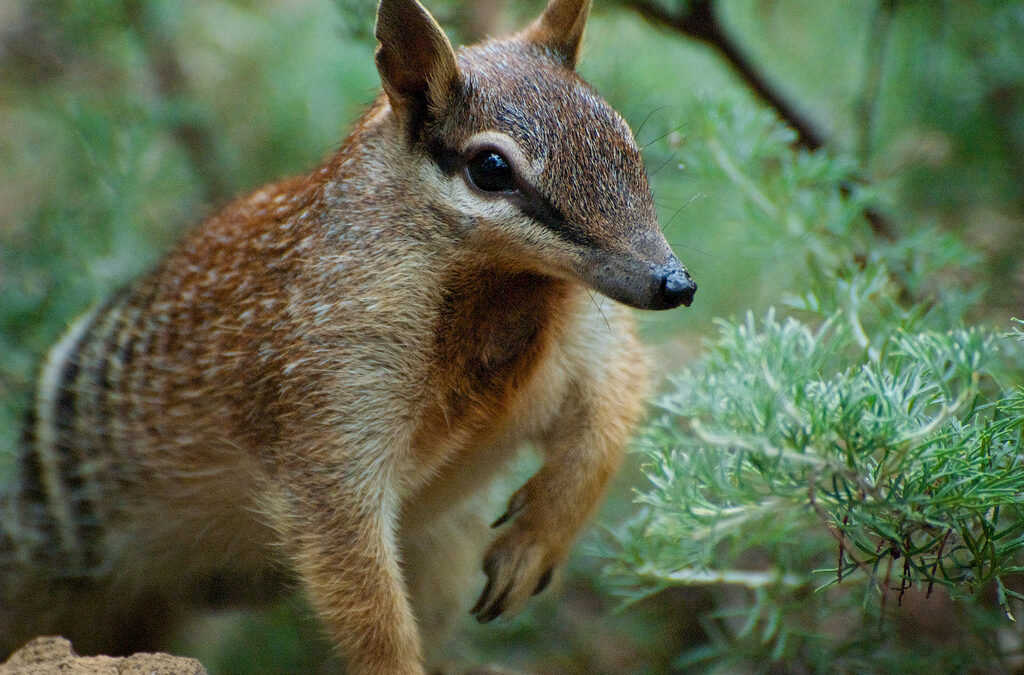Africa produces edible termites at rates unrivalled in the land of marsupials because the African insects are grazers rather than wood-eaters.

Prof. Mumblebard claims: The numbat and the aardwolf both rely on termites, and are convergent in terms of their peg-like teeth and long tongues. They remain different in body size and other features simply because they’re as unrelated as it’s possible for mammals to be: one is marsupial and the other placental.
Robin and the Honey Badger respond: The difference in size between numbat and aardwolf reveals major ecological differences relating to woodiness and nutrient availability between the Australian and southern African habitats. The numbat eats wood-eating termites, whereas the aardwolf eats dwarf shrub- and grass-eating termites. Although the southern interiors of Australia and South Africa have similar dry climates, the nutrient-poverty of the former has resulted in a wooded landscape while the nutrient-richness of the latter has resulted in a landscape dominated by dwarf shrubs and grasses. Trees are intrinsically less productive than small plants in terms of food – directly or via termites. So a species relying on termites in a nutrient-poor wooded habitat is likely to be smaller than a species relying on termites in a nutrient-richer low vegetation. Numbat and aardwolf are typical of many other organisms from insects to elephant that differ intercontinentally in parallel ways.

Please join us here at the Bio-edge with your own comments. In the discussion below we encourage links to any evidence supporting either Prof. Mumblebard or Robin and the Honey Badger. Illustrations are welcome but please cite all sources or we may be forced under copyright to delete your comment.
***
Featured image: The numbat (Myrmecobius fasciatus) by Helenabella (CC BY-SA 3.0, Numbat)

